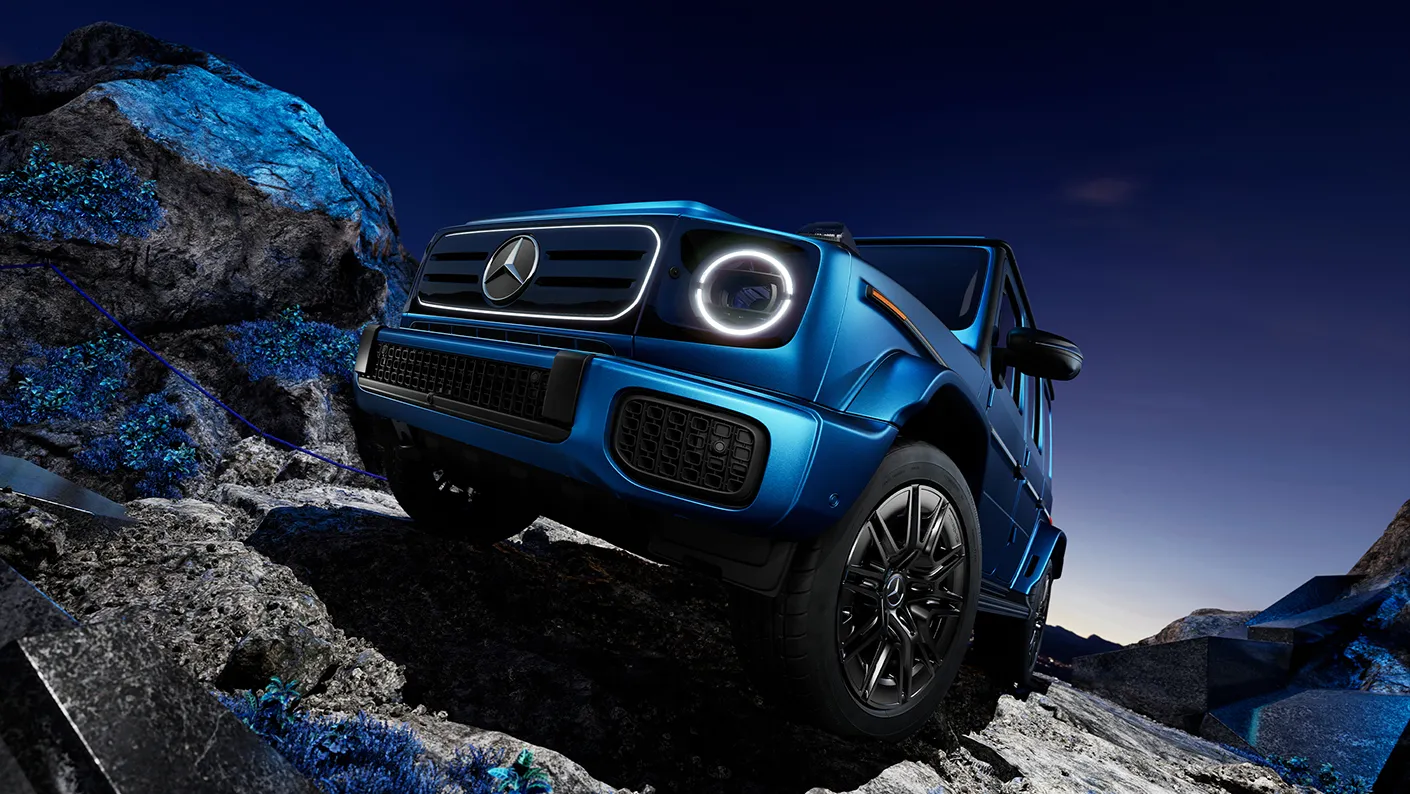Luxury vehicles have always symbolized more than just transportation—they represent elegance, engineering precision, and groundbreaking technology. Yet, one important factor that many potential buyers overlook is depreciation.
While most luxury cars lose a significant amount of value the moment they leave the dealership, there are a few models that manage to retain a large portion of their original cost over the first five years. Depreciation can eat deeply into your investment, sometimes slashing 40% to 50% off the original price in just a few years, particularly in competitive markets.
Some buyers ignore this, seeing their purchase solely as a personal indulgence, while others recognize that a well-chosen luxury vehicle can also be a smart financial decision. Brands like Porsche, Lexus, Mercedes-Benz, and Tesla—known for their meticulous engineering, long-term reliability, and advanced technology—consistently perform well when it comes to resale value.
Several factors contribute to a luxury car’s ability to hold its value. Brand reputation plays a huge role; high-end manufacturers with strong track records for performance and durability tend to attract loyal buyers even in the used market.
Reliability and maintenance costs are just as important. Cars that are dependable and inexpensive to repair are far more desirable in the secondhand space.
Additionally, features like advanced safety systems, high-quality interiors, and limited production runs all help to keep demand strong. Buyers looking for used luxury vehicles are drawn to models with these qualities, which promise fewer headaches and lower ownership costs over time.
In this article, we’ll cover ten luxury vehicles that stand out for their strong resale value after five years. Each model listed includes key specifications, performance metrics, and reasons for its sustained popularity in the used market.
Whether you’re after a thrilling sports car, a capable SUV, or a tech-forward electric vehicle, this guide highlights luxury cars that not only offer an enjoyable driving experience but also represent a smart long-term investment. Read on to discover which models combine performance and prestige with financial savvy.
1. Porsche 911
The Porsche 911 is one of the most iconic and enduring sports cars on the market. With its instantly recognizable shape and exhilarating performance, the 911 remains a favorite among both enthusiasts and collectors.
Built with premium materials and produced in relatively low volumes, the 911 maintains strong demand, allowing well-maintained examples to retain up to 75% of their original value after five years.
Porsche’s reputation for continuous performance upgrades and exceptional build quality ensures that even older models remain thrilling to drive and equipped with modern comforts.
This blend of performance, prestige, and longevity makes the Porsche 911 a reliable choice for those looking to invest in a sports car that won’t depreciate like others in its class.
The Porsche 911 is one of the most iconic sports cars ever built, with a legacy that dates back to its debut in 1964. Known for its distinctive design and unique rear-engine layout, the 911 has become a symbol of precision engineering and driving excellence.
It typically comes equipped with a flat-six engine mounted in the rear, delivering a wide range of power outputs—from 379 horsepower in the base Carrera to over 640 horsepower in the Turbo S and even more in track-focused models like the GT2 RS.
This allows for incredible acceleration, with some variants reaching 0 to 60 mph in as little as 2.5 seconds. Porsche also offers rear-wheel drive and all-wheel drive options across the lineup, making the 911 versatile enough for different driving needs and climates.
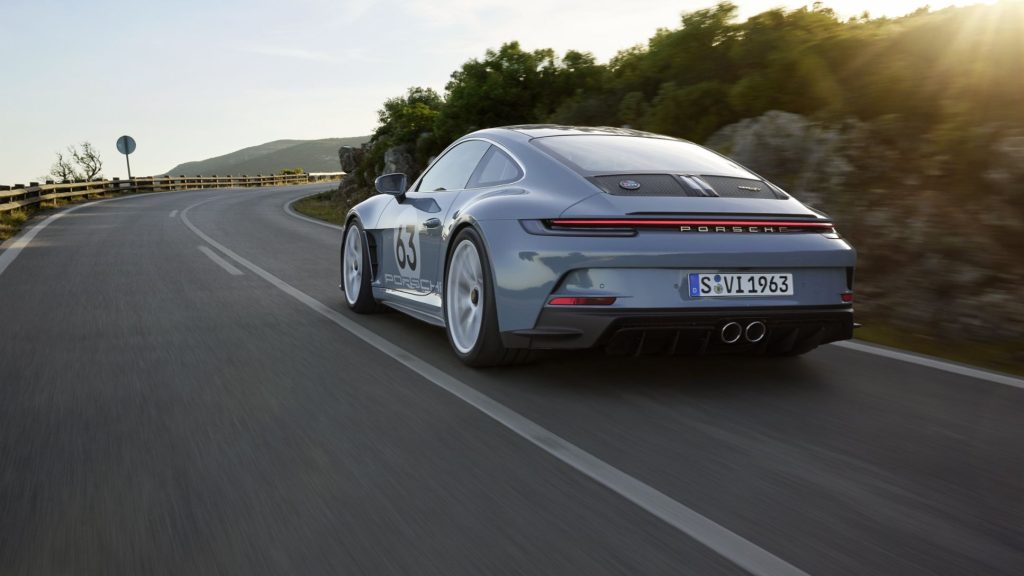
Beyond its performance, the 911 is celebrated for its exceptional build quality and attention to detail, which contribute to its strong resale value. In fact, it’s one of the few luxury sports cars that can retain up to 75% of its value after five years if properly maintained.
Inside, the car blends luxury with technology, featuring a 10.9-inch touchscreen, advanced driver-assistance systems, adaptive suspension, and high-end audio options, all of which make it surprisingly comfortable and practical for daily use.
2. Lexus GX 550
The Lexus GX 550 offers a compelling mix of luxury and capability. Based on a rugged body-on-frame platform, it’s engineered to perform well in both city driving and off-road conditions. With a 3.4-liter twin-turbo V6 engine and full-time four-wheel drive, it balances strength and sophistication.
Lexus is known for its exceptional reliability and relatively low maintenance costs, which helps the GX 550 hold approximately 65% of its original value after five years. Inside, it features a spacious and luxurious cabin, complete with advanced technology and premium materials.
Its durability, comfort, and off-road ability make it a highly desirable vehicle in the used market, appealing to buyers who want a luxury SUV that can handle a variety of driving conditions without compromising on quality.
The 2025 Lexus GX is a midsize luxury SUV designed for buyers seeking both rugged off-road capabilities and upscale comfort. Redesigned in 2024, it combines a truck-based design with luxury features, making it a versatile choice for those who want a durable yet refined vehicle.
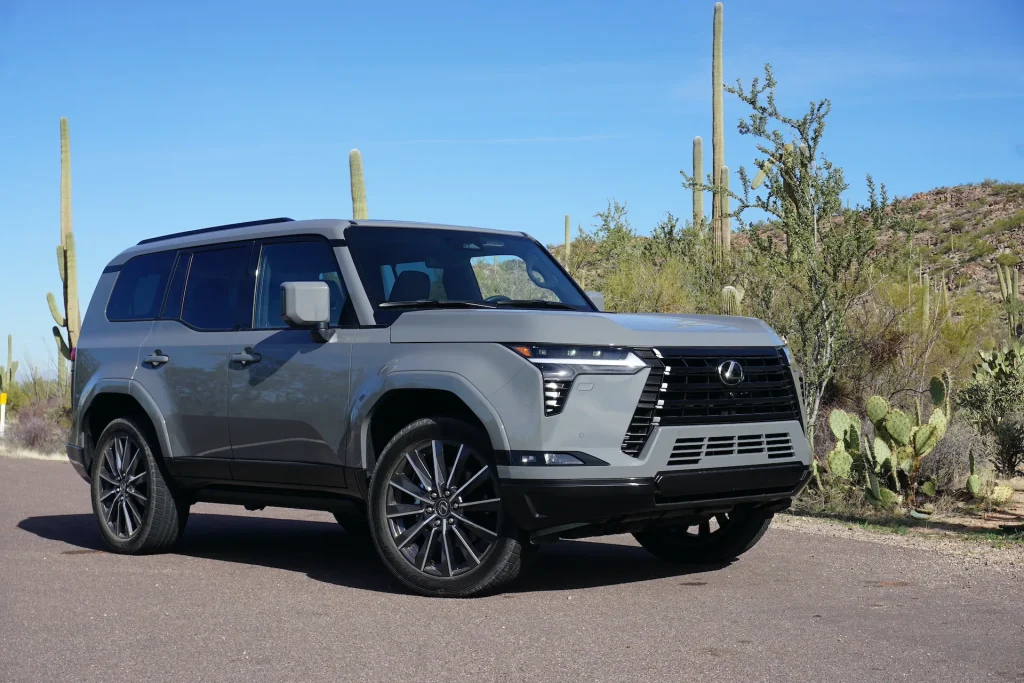
Every model of the 2025 GX comes standard with four-wheel drive and low-range gearing, making it ready for challenging trails and rough terrain. The GX offers various trim packages to cater to different preferences, with the Overtrail and Overtrail+ trims specifically designed for off-roading enthusiasts.
These trims feature all-terrain tires and a locking rear differential to enhance traction. On the luxury side, the GX doesn’t disappoint, with options like massaging front seats and a 21-speaker premium sound system.
However, some buyers may find its fuel economy below average, and the third-row seating, while available, can be cramped and limits cargo space. Despite these minor drawbacks, the 2025 Lexus GX is a well-rounded vehicle that balances off-road performance with luxury features, making it an attractive option for those seeking a capable and comfortable SUV.
Competitors include the Land Rover Defender 110, which offers similar off-road abilities and luxury, and the Toyota Land Cruiser, which shares the GX’s platform but at a lower price. Larger luxury SUVs, such as the Lexus LX and Jeep Grand Wagoneer, offer even more space and premium features for those seeking a bigger, more refined ride.
Also Read: 10 Cars With Best Dash Designs That Bring Innovation
3. Tesla Model X
The Tesla Model X has redefined the luxury SUV space, offering an innovative blend of design and high performance. Staying in continuous production, it retains its distinctive falcon-wing doors and consistently receives the latest technology updates via over-the-air software improvements.
This feature ensures the Model X remains technologically competitive even years after the initial sale. Equipped with dual-motor all-wheel drive delivering up to 670 horsepower and capable of reaching 0–60 mph in approximately 2.5 seconds in the Plaid variant, it also offers a range of up to 348 miles per charge.
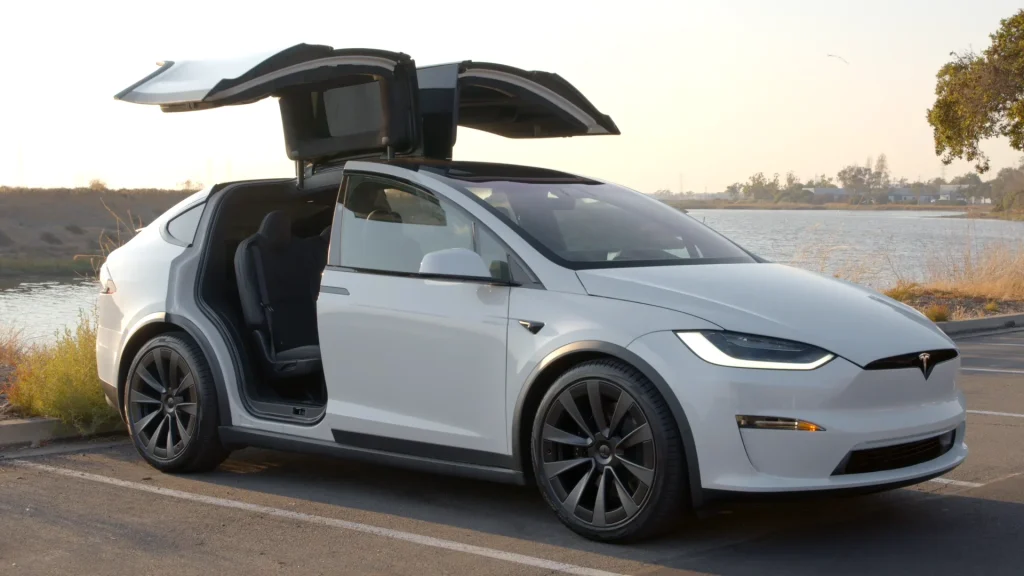
Inside, drivers are greeted by a 17-inch central touchscreen and advanced Autopilot features. Impressively, the Model X retains about 60% of its value after five years, which is notable for an EV.
The growing market interest in luxury electric vehicles, combined with Tesla’s strong reputation as a tech-forward performance brand, makes the Model X an ideal choice for those seeking a high-end, eco-conscious SUV that remains a smart financial investment.
4. Mercedes-Benz G-Class
The Mercedes-Benz G-Class, commonly known as the G-Wagon, continues to stand tall as a symbol of both rugged capability and luxury. With a bold, boxy design that has remained largely unchanged for decades, it maintains a timeless appeal that resonates with a broad audience.
The G-Class delivers powerful performance through its 4.0-liter twin-turbo V8 producing 416 horsepower, complemented by full-time all-wheel drive for on-road speed and off-road agility. Inside, it boasts opulence, featuring Nappa leather upholstery, a 12.3-inch digital display, and a premium Burmester audio system.
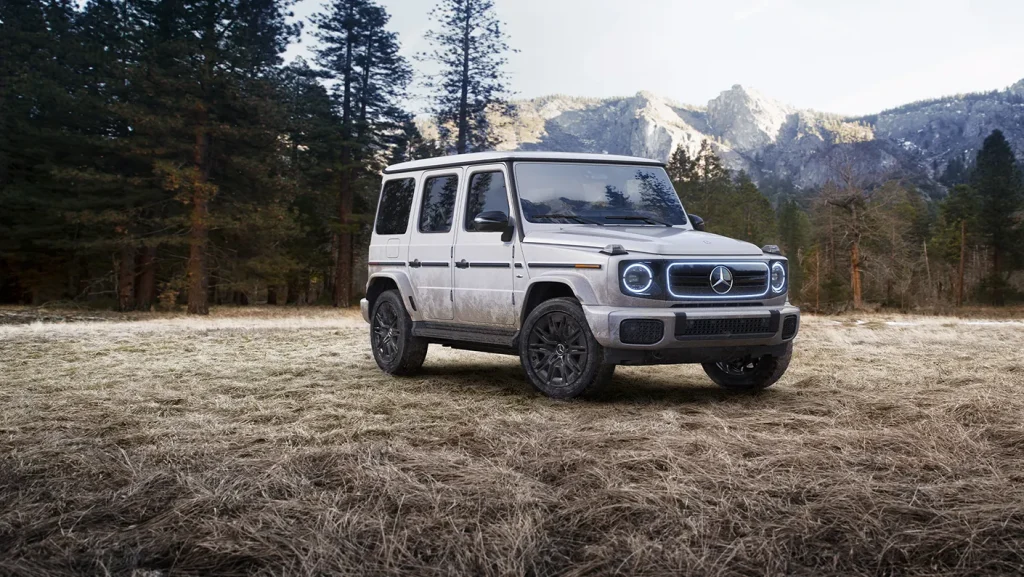
This unique mix of off-road functionality and high-end luxury allows the G-Wagon to retain roughly 70% of its original value after five years, making it one of the top-performing vehicles in the luxury resale market.
For buyers wanting a standout SUV that is both a statement of affluence and a capable performer, the G-Class remains an unrivaled option.
5. Range Rover Sport
The Range Rover Sport brings together luxury, dynamic performance, and off-road capability in a seamless package. It features a powerful 3.0-liter turbocharged inline-six engine delivering 395 horsepower, combined with an advanced all-wheel drive system and smooth suspension for a refined and engaging driving experience.
The interior reflects modern luxury, with Windsor leather upholstery, a 13.1-inch infotainment display, and a Meridian audio system. The vehicle’s appeal lies in its ability to offer a premium driving experience while being ready for more rugged terrain when required.
With a retained value of around 60% after five years, the Range Rover Sport proves itself as a sound investment in the upscale SUV segment. Its blend of elegance, advanced technology, and proven versatility continues to attract buyers looking for both sophistication and durability in a luxury vehicle.
The 2025 Land Rover Range Rover Sport arrives at a time when luxury SUVs are experiencing a golden era, with some models designed for speed and others for sophistication, though few actually leverage their off-road capabilities.
The Range Rover Sport fits squarely in the middle of this dynamic, offering a balance between performance and elegance. The base model comes equipped with a 355-hp mild-hybrid inline-six engine, but for those seeking a more thrilling driving experience, the P530 twin-turbo V8 delivers 523 hp.
For the performance enthusiast, there’s the 626-hp Range Rover Sport SV Edition Two, providing even more power. Despite sitting below the flagship Range Rover in terms of size and price, the Range Rover Sport is still a significant investment.

It is more expensive than the BMW X5, and while its performance capabilities are impressive, it doesn’t necessarily outshine the Porsche Cayenne. This raises the question: Is the Range Rover Sport truly the ultimate luxury all-rounder, or is it simply an off-roader dressed in a tuxedo?
New for 2025, the biggest change is the return of the P530 twin-turbo V8, which is available on the Dynamic SE and Autobiography trims. Additionally, Land Rover has introduced the Stealth Pack, a stylish upgrade that enhances the Range Rover Sport’s appearance.
This package includes a Carpathian Grey metallic paint finish with a Satin protective film, offering both a sleek look and added scratch protection.
The package also swaps the usual chrome elements for glossy Narvik Black accents, darkening features like the hood vents, lettering, bumpers, and side sills for a more aggressive stance. The roof is finished in Narvik Black Gloss, and the package also includes 23-inch Gloss Black wheels, black-painted brake calipers, and privacy glass.
Inside, the Stealth Pack offers an integrated air purifier to maintain a premium cabin atmosphere. The package, priced at $10,305, is available exclusively on the Dynamic SE trim.
The 2025 Range Rover Sport has a starting MSRP of $83,700 for the SE trim, which comes with the P360 mild-hybrid gas engine. The Dynamic SE starts at $90,800 and offers three powertrain options: the P400 mild-hybrid gas engine as standard, the P460e plug-in hybrid for $95,100, and the P530 mild-hybrid V8 for $109,700.
The Autobiography trim starts at $118,700 and provides a choice between the P550e plug-in hybrid or the P530 mild-hybrid V8, with the latter priced at $123,400.
For those seeking even greater performance, the Sport SV Edition Two trim, featuring the 626-hp V8, is available, though it is reviewed separately. All-wheel drive is standard across all trim levels and powertrains, and an additional $1,625 is added for destination and delivery charges.
As is typical for Land Rover, the Range Rover Sport offers a wide range of customization options. Among these are the Stormer Handling Pack, which enhances performance with an electronic active differential, torque vectoring by braking, AWD steering, and an upgraded suspension.
Other available options include towing, climate, convenience, and comfort packs, as well as the option for full extended leather upholstery in place of the standard Windsor leather.
Cars That Don’t Hold Their Value
Depreciation is one of the most important factors to consider when purchasing a new car. The last thing you’d want to see is your big purchase losing a bunch of value shortly after driving off the lot.
iSeeCars analyzed data from over 1 million car sales from November 2022 to October 2023 and discovered which vehicles depreciate the most. No surprises here: Luxury brands suffer the most when it comes to value over time.
1. Maserati Quattroporte
At the top of the list is the Maserati Quattroporte, with an average depreciation after five years of 64.5 percent and an average price difference from MSRP of $90,588.
Luxury sedans are known for losing tons of value over time, so it’s not surprising to see the Maserati Quattroporte on top of iSeeCars’ lists, losing a whopping 64.5 percent of its value on average after five years. We suspect the less-than-excellent long-term reliability and Chrysler switchgear have a lot to do with the Quattroporte’s top position.
The Maserati Quattroporte is a prime example of how sometimes defying the norm can lead to success.
This luxury car from the Italian automaker is Maserati’s response to the Mercedes S-Class luxury limousine. However, instead of focusing on soothing passengers and prioritizing rear-seat comfort, the Quattroporte aims to offer a more thrilling, high-energy driving experience.
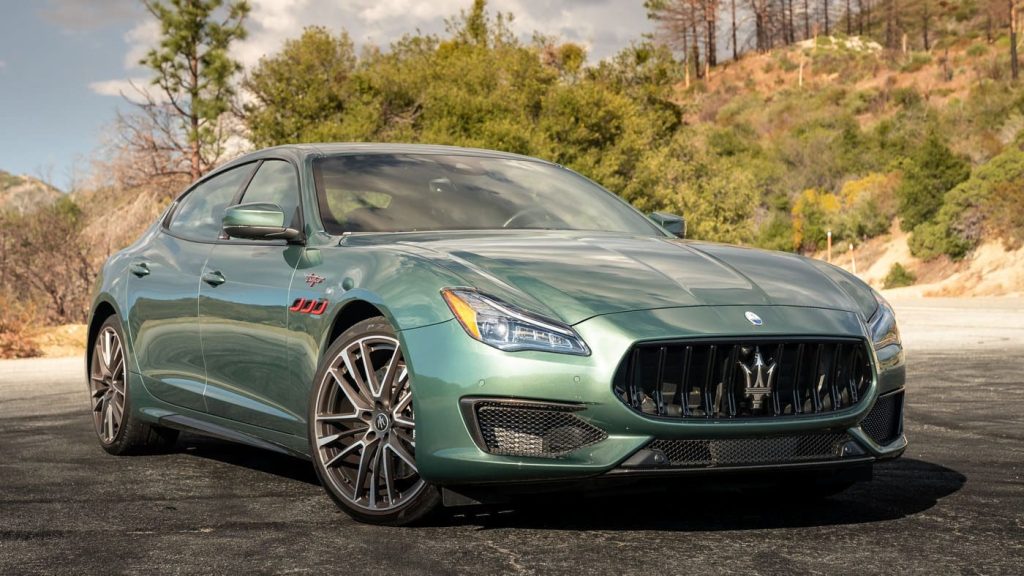
With a bold and slightly rebellious character, the Quattroporte stands apart from its competitors. Its athletic proportions give it a sharper look compared to other luxury sedans, including the Audi A8, BMW 7 Series, and Porsche Panamera.
The Quattroporte also differs from its rivals by having a less tech-heavy interior, creating a more traditional ambiance with a sporty edge, somewhat reminiscent of the Jaguar XJ.
Under the hood, the Quattroporte offers two petrol engine options, but it doesn’t feature any hybrid or electric technology. Additionally, it lacks a diesel option for those who prioritize long-distance driving. The car is offered in two distinct trim levels: Modena, which is paired with the entry-level V6 engine, and Trofeo, which is the top-of-the-line version with a powerful V8 engine.
2. BMW 7-Series
Next is the BMW 7-Series, which has an average depreciation after five years of 61.8 percent and an average price difference from MSRP of $72,444. The BMW 7-Series’ appearance on this list proves the bigger they are, the harder they fall.
The flagship four-door from Bavaria loses a staggering 61.8 percent of its value over five years on average, according to iSeeCars. That’s worse than anything from Mercedes-Benz or Audi; proof that polarizing design and the latest tech can only get you so far.
The BMW 7 Series has long been the flagship full-size sedan of the Bavarian automaker, offering the latest in automotive technology, much like its primary competitor, the Mercedes S-Class.
The 7 Series has been a key part of BMW’s lineup since the 1970s with the E23 generation, followed by six more generations leading up to the present day. Notable milestones in the model’s history include the E65, which featured a controversial design and was the first car in the world to offer a six-speed automatic transmission.
For the 2006 model year, the 7 Series underwent significant changes, softening the divisive design of its predecessor. The subsequent F01 generation returned to a more traditional, elegant styling and also introduced a turbo-diesel engine to the lineup.

In 2016, the G11 generation marked a complete redesign, featuring upgraded engines and retaining the V12 option. The latest G70 generation, introduced in 2023, stirred some controversy with its styling but brought more technology than ever before, including an all-electric i7 variant.
The G70 generation of the 7 Series features a 375-hp 3.0L turbocharged inline-six engine, which is available with rear- or all-wheel drive, as well as a 536-hp 4.4L twin-turbo V8, which is exclusive to all-wheel drive configurations. Both engine options are paired with an eight-speed automatic transmission.
The G70 also boasts bold new styling, a tech-heavy interior with BMW’s most advanced lighting, and an optional rear theatre screen that lowers from the ceiling, enhancing the overall luxury experience.
This summary covers the major updates to the BMW 7 Series throughout its history, with a focus on U.S. models, and is continuously updated as new generations are introduced.
3. Maserati Ghibli
Coming in third is the Maserati Ghibli, with an average depreciation after five years of 61.3 percent and an average price difference from MSRP of $58,623. The Maserati Ghibli shares many components with its larger sibling, the Quattroporte, which results in a similarly brutal depreciation curve.
iSeeCars found that Ghiblis lose 61.3 percent of their value on average over five years. While that’s disappointing for new car buyers, it’s a significant opportunity for those looking to own an Italian performance sedan at a steep discount by shopping in the used market.
The Maserati Ghibli made its debut a decade ago, and since then, the same basic design has remained in production, while its competitors have undergone two full redesigns.
Now, for 2024, the Ghibli arrives as a final-edition trim priced at an eye-popping $110,000. This version features a 424-horsepower twin-turbo V6 engine and all-wheel drive, placing it in the same luxury sedan category as the newly launched BMW 5 Series and the Mercedes-Benz E-Class.
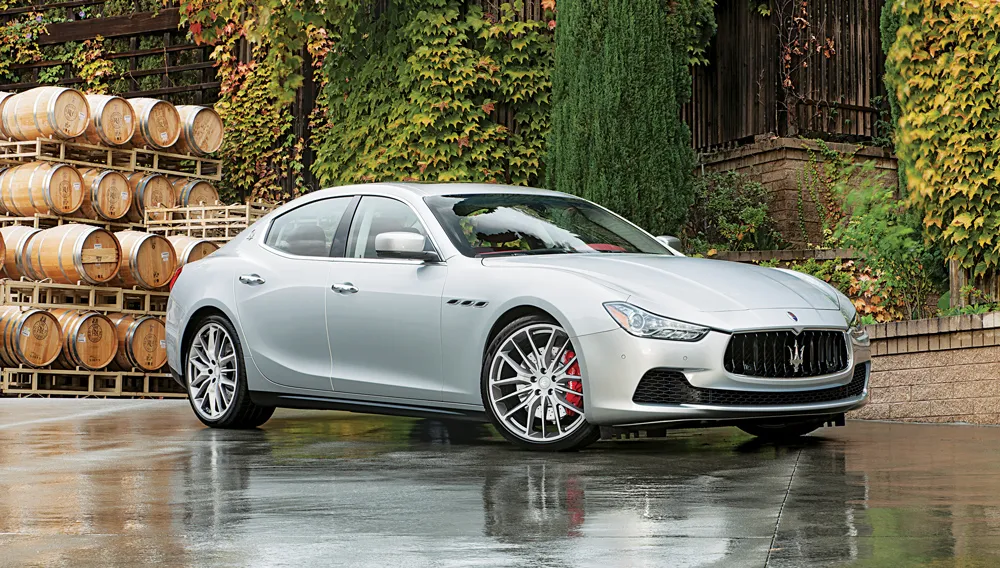
However, the Ghibli’s pricing is considerably higher—$50,000 more than its rivals—and despite its higher cost, it is slower than the 375-hp 540i xDrive, lacking a performance advantage. Maserati has loaded the Ghibli with features, offering a fully equipped model with a stylish cabin and rich leathers, but the design is starting to show its age.
The second-row seating feels cramped, and fuel efficiency remains subpar. The use of switches and stalks borrowed from mainstream Stellantis cars was already questionable when the Ghibli was nearly $30,000 cheaper, but it’s even less acceptable now.
Given these drawbacks, one might question whether there’s a rational reason to buy this aging Italian luxury sedan. For the 2024 model year, the Ghibli is updated one final time, marking the last model year in its current form for the U.S. market.
The base GT and rear-wheel-drive Modena trims from last year have been discontinued, leaving the all-wheel-drive Modena Q4, now called the Modena Ultima Q4, as the only remaining option in the regular Ghibli lineup. The rear-wheel-drive Trofeo is still available but is reviewed separately, now updated as the final-edition Trofeo 334 Ultima.
The Modena Ultima Q4 gets new 21-inch alloy wheels with red calipers and additional standard features, including ventilated front sports seats, red stitching, black leather upholstery, and a Harman Kardon audio system. The discontinuation of the less expensive trims means the starting price for the last new Maserati Ghibli available now begins at nearly $110,000.
The 2024 Maserati Ghibli Modena Ultima Q4 has an MSRP of $109,500, excluding additional options or the $1,495 destination fee. With only one trim available at such a high price, the Ghibli offers little in terms of logical purchasing reasons. It is likely to appeal to those drawn to its Italian flair and the rarity of this final-edition model.
Available options are mostly cosmetic, focused on exterior and interior design enhancements, which further increase the cost.
However, for many buyers, the decision to purchase this car is likely driven more by emotion and aspiration rather than practicality, so those willing to make the emotional investment might opt to splurge on the black-out Nerissimo package and carbon fiber cabin trim.
Also Read: 5 Luxury SUVs That Last a Decade and 5 That Constantly Need Fixes
4. BMW 5-Series Hybrid
Next on the list is the BMW 5-Series Hybrid, which sees an average depreciation of 58.8 percent over five years and an average price difference from MSRP of $37,975. Luxury sedans continue to dominate the depreciation rankings, and the hybrid version of the 5-Series is no exception.
iSeeCars data reveals this particular trim suffers a considerable drop in value despite offering some of the best fuel efficiency in the lineup. It’s a sharp decline for a model that, while efficient, doesn’t necessarily stand out in a crowded field of executive sedans.
There was a time when BMW’s 5 Series was lovingly referred to as the “Best Car in the World.” But with the fast-paced evolution of the automotive world, the question now arises: is the BMW saloon still one of the top contenders in its class? And with three plug-in hybrid variants available, could the latest 5 Series tempt you to make the switch?
Indeed, there are three PHEVs to choose from. The 530e comes with a 2.0-liter, four-cylinder turbo petrol engine paired with an 80kW (109hp) electric motor. Buyers can opt for either rear-wheel drive or xDrive all-wheel drive. Meanwhile, the more powerful 545e upgrades to a 3.0-liter, six-cylinder engine, but it’s only available with xDrive all-wheel drive.
With this much PHEV variety, choosing between the different models feels like walking into a Starbucks and debating whether to go for a flat white, a skinny macchiato, or a coconut-milk latte.
Identifying a 5 Series PHEV from a distance isn’t easy. The plug-in hybrids are marked only by subtle boot badging and a flap that covers the charging port. Fortunately, the 5 Series hasn’t fallen victim to BMW’s recent obsession with oversized kidney grilles, though it’s not the most eye-catching car in its class. In comparison, an Audi A6 TFSI e or Volvo S90 Recharge would likely grab more attention as they cruise by.

However, the 5 Series makes up for this lack of flair with its interior. Few cars in any segment offer a cabin as well-crafted, thoughtfully arranged, and comfortable to sit in as this one. Space is abundant for passengers, though the center-rear seat is less than ideal, as anyone sitting there will have to straddle the bulky transmission tunnel in the footwell.
To further enhance the 5 Series experience, it comes equipped with one of the best infotainment systems in the industry. BMW’s iDrive system is displayed on either a 10.25-inch or an even larger 12.3-inch screen, and it offers up to four different control methods, all of which are highly effective. It also supports Android Auto and Apple CarPlay, in case you prefer to use these alternatives over BMW’s own software.
As is typical with plug-in hybrids, the 5 Series’ boot space suffers somewhat. To accommodate the 12kWh lithium-ion battery in the PHEV models, the cargo capacity is reduced from the standard 530 liters to 410 liters.
5. Cadillac Escalade ESV
Fifth place goes to the Cadillac Escalade ESV, with an average depreciation after five years of 58.5 percent and an average price difference from MSRP of $63,885. Even with its upscale badge, the Escalade ESV’s presence on this list is somewhat surprising.
While it boasts cutting-edge technology and high-end materials, the extended-wheelbase Escalade is still a workhorse at heart—offering massive seating and cargo capacity and the ability to tow over 8,000 pounds. Yet despite its utility and luxury appeal, the Escalade ESV experiences a steep loss in value, averaging 58.5 percent depreciation after five years.
The 2025 Cadillac Escalade represents a significant update for this iconic luxury SUV, featuring several enhancements that maintain its position at the top of the luxury vehicle segment. This year, the Escalade has been given slimmer, vertical headlights and a new dash-spanning tech display, which provides a modern look while integrating several advanced features.
Although the 2025 model no longer offers the 3.0-liter diesel engine option, it continues to impress with its powerful performance capabilities. The Escalade can accommodate up to eight passengers and tow up to 8,100 pounds, with the option of a supercharged V8 engine that delivers an astonishing 682 horsepower.
This ensures that the Escalade remains a dominant force in its category, maintaining its impressive blend of luxury, power, and practicality. Inside, the Escalade continues to offer one of the most spacious cabins in its class, with abundant cargo space and in-cabin storage.
The SUV’s digital future is evident in its tech updates, including a 55-inch glass panel that spans the dashboard, combining the driver’s digital instruments, a central touchscreen, and a separate display for the front passenger. The front passenger screen is even polarized to prevent distractions for the driver.
For the top-tier trims, Cadillac offers an “executive” seating package, which includes massaging second-row seats, stowable tray tables, and wireless charging for two passengers, enhancing the luxury experience further. The Escalade’s design and features continue to cater to luxury fleets and shuttle services, ensuring comfort and convenience for those who require it.

However, the Escalade is not without its drawbacks. Its large size makes parking and maneuvering in tight spaces a challenge, and while the front cabin is luxurious, the rear cabin’s materials fall behind some of its competitors in terms of quality.
Despite this, the Escalade remains an impressive option, especially with the introduction of more driver safety features and the updated infotainment system. For those considering the Escalade, the Premium Luxury trim offers the best value.
While it costs nearly $10,000 more than the base Luxury trim, it justifies the price with upgraded upholstery, heated and ventilated front seats, and access to appealing options such as a 36-speaker AKG sound system.
If you’re in the market for a luxury SUV that combines power, space, and cutting-edge technology, the 2025 Cadillac Escalade stands out as an excellent choice.

